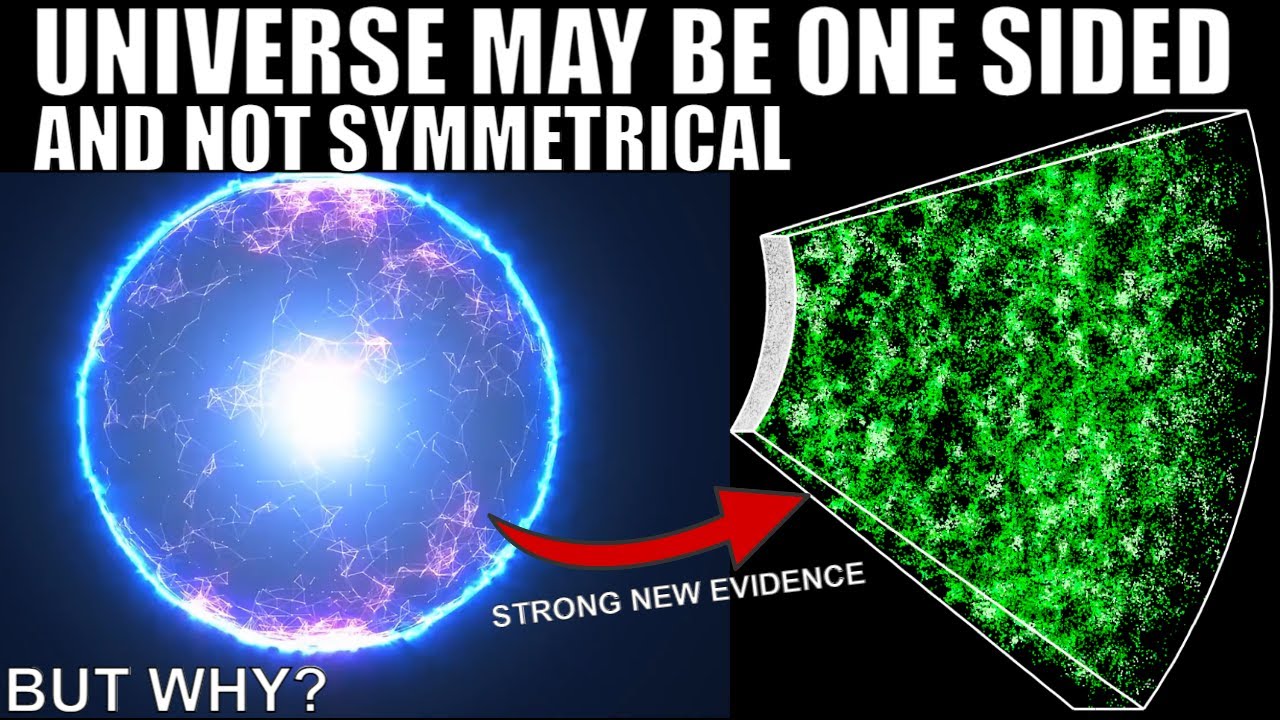From the early days of particle physics and quantum mechanics, it was assumed that the laws of physics observed the principle of conservation of parity, which essentially means that any physical experiment should behave the same if observed reflected in a mirror or, stated equivalently, that the universe has no inherent handedness (“left-” or “right-”). This was observed to be the case for particle interactions through the strong nuclear and electromagnetic force, but during the 1950s some experimental results gave evidence that the weak interactions (such as beta decay of a nucleus) might violate conservation of parity and, in 1956, an experiment involving the decay of cobalt-60 nuclei confirmed this violation.
Parity violation was considered a curiosity of the micro-world with few consequences to the universe from the scale of chemistry to the cosmos. Now, a paper published in Monthly Notices of the Royal Astronomical Society on 2023-05-22, “Measurement of parity-odd modes in the large-scale 4-point correlation function of Sloan Digital Sky Survey Baryon Oscillation Spectroscopic Survey twelfth data release CMASS and LOWZ galaxies”, presents evidence suggesting that the universe has a “handedness” at the very largest scale—the clustering of galaxies. Here is the abstract.
A tetrahedron is the simplest shape that cannot be rotated into its mirror image in three-dimension (3D). The 4-point correlation function (4PCF), which quantifies excess clustering of quartets of galaxies over random, is the lowest order statistic sensitive to parity violation. Each galaxy defines one vertex of the tetrahedron. Parity-odd modes of the 4PCF probe an imbalance between tetrahedra and their mirror images. We measure these modes from the largest currently available spectroscopic samples, the 280,067 luminous red galaxies (LRGs) of the Baryon Oscillation Spectroscopic Survey (BOSS) twelfth data release (DR12) LOWZ (\bar{x} = 0.32) and the 803,112 LRGs of BOSS DR12 CMASS (\bar{x} = 0.57). In LOWZ, we find 3.1σ evidence for a non-zero parity-odd 4PCF, and in CMASS we detect a parity-odd 4PCF at 7.1σ. Gravitational evolution alone does not produce this effect; parity-breaking in LSS, if cosmological in origin, must stem from the epoch of inflation. We have explored many sources of systematic error and found none that can produce a spurious parity-odd signal sufficient to explain our result. Underestimation of the noise could also lead to a spurious detection. Our reported significances presume that the mock catalogues used to calculate the covariance sufficiently capture the covariance of the true data. We have performed numerous tests to explore this issue. The odd-parity 4PCF opens a new avenue for probing new forces during the epoch of inflation with 3D large-scale structure; such exploration is timely given large upcoming spectroscopic samples such as Dark Energy Spectroscopic Instrument and Euclid.
The full text, based upon research funded by U.S. taxpayers, is behind a paywall, but the pre-publication version may be read on arXiv.
Precisely how a tiny violation of parity symmetry in the very early universe might have manifested itself in the shape of groups of four galaxies observable today is, let us say, less than clear, but a seven sigma signal is difficult to ignore.
See also “The Cosmological Axis of Evil”, posted here on 2021-11-01, and “Is the Universe Mirror Symmetric on the Cosmological Scale?”, posted on 2023-01-30.
